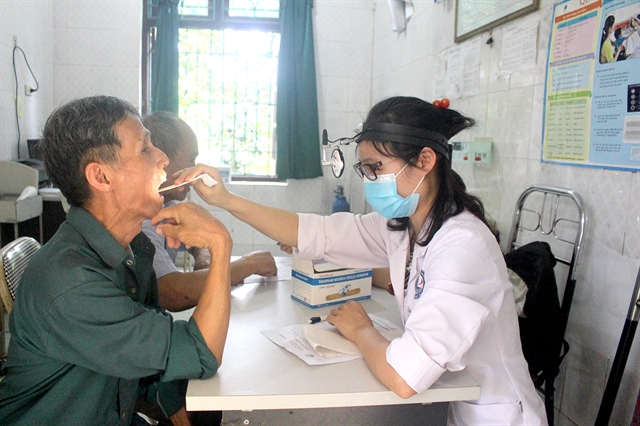 Opinion
Opinion

 |
| Checking health for local people in Tam Đảo District, northern Vĩnh Phúc Province. VNA/VNS Photo |
Associate Professor Phan Lê Thu Hằng, deputy director of the Financial Planning Department under the Ministry of Health, speaks to Sức Khỏe&Đời Sống (Health and Life) newspaper about recently-approved master plan on the healthcare network for the 2021-30 period, with a vision to 2050.
Could you elaborate on the position of the healthcare network master plan in the current general planning?
The current planning system has three main groups. National comprehensive plans (national master plan, marine spatial plan national and national land use planning); national sectoral plans, and local plans (regional plans, provincial/city plans under the central Government).
The master plan on the healthcare network is included in the national sectoral plan. Its objects are five regional, inter-provincial and interdisciplinary medical facilities in the fields of medical examination, treatment, and rehabilitation; forensic examination and forensic psychiatric examination; preventive medicine, public health; testing, inspection, and standardisation of drugs, cosmetics, food, vaccines and medical biological products, medical equipment, pharmaceutical production, vaccines, medical biological products and medical equipment; population and reproductive health.
The master plan on the healthcare network does not include State management units in charge of healthcare sector nor include local medical facilities.
Could you tell us what basic concepts the master plan is constructed on?
The master plan on the healthcare network is built on the basis of the following basic development perspectives:
It is consistent with major national orientations, including national development orientation and vision; socio-economic development strategy; national master plan and other relevant national plans.
It ensures comprehensive, integrated, and continuous service provision with convenient access and financial protection. It also ensures health security, responds to climate change and emergency situations.
Also, developing the network of medical facilities is associated with innovating the organisational structure and management methods to improve quality and operational efficiency. Developing a network of medical facilities aims to ensure balance, synchronisation, and effective connection between the network of medical national-level and local facilities.
It will develop the network of medical facilities towards a harmonious combination of basic and specialised healthcare; between traditional medicine and modern medicine; between armed forces and civilian medicine associated with building national defence and security medical potential.
Investment resources will be maximised to develop the network of medical facilities according to planning, coupled with effective use of investment resources.
It ensures fairness, gradually narrow the development gap between regions towards universal access to quality healthcare services.
What is noteworthy about the development goals identified in the master plan?
The master plan has been consistent with the goals of equity, quality, efficiency and international integration, increasing people's access to medical services and having enough capacity to meet the needs of protecting, caring for and improving public health in each period.
The master plan has set the target that by 2050, Việt Nam’s indicators on hospital bed size and key healthcare workers’ quality will reach the average level of the countries belonged to the Organisation for Economic Co-operation and Development (OECD).
Could you share new orientations in developing network of medical facilities in the future?
We look to develop the network of medical facilities towards fairness, efficiency, development and international integration through the development of high-level professional and technical capacity intensive care.
A number of hospitals are expected to be developed into modern, high-tech specialised hospitals, on par with developed countries in the region and the world.
Some general hospitals and provincial-level specialised hospitals will be upgraded to undertake regional functions.
A network of satellite facilities of central hospitals will be established while a number of new central hospitals in the Central Highlands and Mekong Delta regions will be built.
The master plan will look to set up the National Disease Control Agency and three regional disease control centres along with institutes of hygiene and epidemiology to take on the role of connecting and supporting provincial disease control.
We will look to form a national unit for vaccine technology transfer in Hà Nội to promote technology transfer activities in manufacturing vaccines and medical biological products nationwide.
The proportion of private hospital beds is set to account for 15 per cent by 2030 and 25 per cent by 2050.
For the long-term vision, the master plan looks to build two in-depth healthcare complexes when conditions are met in the northern and southern regions. Could you tell us more about this orientation?
The medical complex is considered to create a boost for innovation and high-tech development of the entire healthcare sector.
The model will create space for sharing medical technical infrastructure between medical facilities, especially between laboratory systems.
It will create a space for connection between research, development, human resource training and design and production of high-tech medical and pharmaceutical products. VNS




